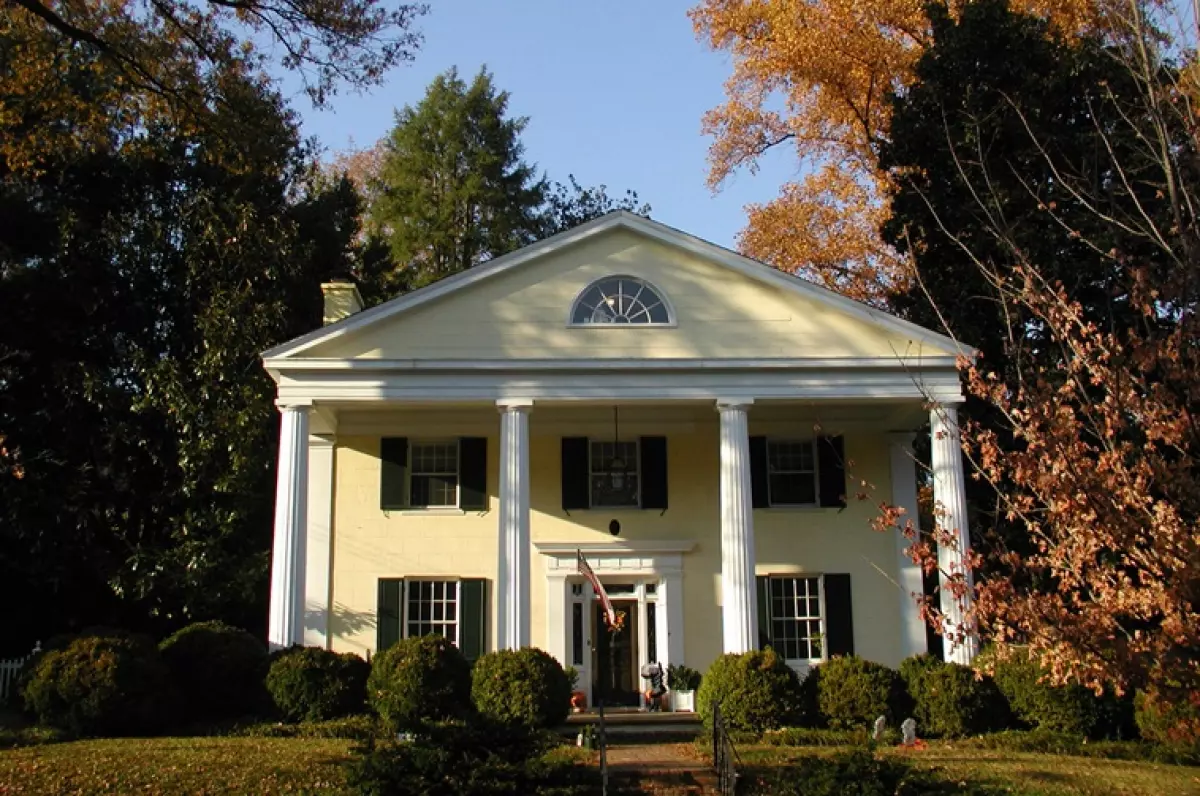 Image: Greek Revival Home
Image: Greek Revival Home
Introduction
The Greek Revival architectural style, which thrived from 1830 to 1850, holds a special place in the history of American architecture. It emerged as a national style during a time when America was rapidly expanding westward and seeking its own identity. Inspired by the parallel between ancient Greek culture and the present day, Greek Revival buildings became a symbol of America's triumph and its connection to the birthplace of democracy.
Overview
Greece's struggle for independence from Turkey in the early 19th century resonated deeply with the American people. Their sympathy and support for Greece's war of independence, coupled with the decline of British influence after the War of 1812, contributed to the rising popularity of the Greek Revival style. From 1825 to 1860, this architectural style flourished in more isolated parts of the country, eventually becoming a dominant feature of American buildings, including churches, banks, town halls, and houses.
One of the earliest examples of Greek Revival architecture in the United States is the Second Bank of the United States in Philadelphia, constructed between 1819 and 1824. As the nation expanded westward, the style spread with the early settlers, incorporating subtle regional variations along the way. The Greek Revival style gained the strongest foothold in the fastest-growing regions, leaving a lasting legacy of magnificent temple-fronted homes.
 Image: Greek Revival Home
Image: Greek Revival Home
Characteristics
Greek Revival homes, often painted in white to mimic the grand marble buildings of ancient Greece, featured bold yet simple moldings. Heavy cornices, gables with pediments, and unadorned friezes were typical elements. One enduring legacy of the style is the gable-fronted house, which can be found throughout America.
Materials
Stucco, wood, and occasionally stone were the primary materials used in the construction of Greek Revival buildings. The aim was to emulate the appearance of stone or marble temples. Buildings were usually painted white or enhanced with faux finishes, such as the Lee Mansion at Arlington National Cemetery.
Roof
Low-pitched gable and hip roofs were common in Greek Revival architecture. The cornice line was adorned with a wide band of trim to emphasize the temple-like roof. Standing seam tin or cedar shingles were the materials of choice during that period.
Windows
Historically accurate Greek Revival homes featured window panes that reflected the glazing technologies of the mid-19th century. Double-hung windows with six panes per sash were prevalent, with decorative windows often arranged in three-part assemblages. Unique to the Greek Revival style are small rectangular windows set into the frieze beneath the cornice, replacing common dormers. Window surrounds tended to be less elaborate compared to the doorways.
Columns
Columns and pilasters were defining elements of Greek Revival architecture. While classical columns were typically round, the Greek Revival style also incorporated square or even octagonal columns. These columns were sometimes designed without bases, following the Greek style, or with bases in a Roman adaptation. Wood was the primary material used for columns, which could be either fluted or smooth.
The Doric capital style was the most prevalent in Greek Revival architecture, although Ionic and Corinthian designs were occasionally employed. Pilasters, similar to columns, were also used to add architectural interest to the front facade of buildings.
Entrance
Unlike the Georgian and Federal styles, Greek Revival architecture favored a simple post-and-beam construction over arched entrances and fan lights. Elaborate door surrounds were a common feature, with small-paned side lights and a rectangular transom framed by heavy trim. The doors themselves could be single or double, divided into one, two, or four panels. Porticos or porches were often added in front of the entrance to enhance the overall grandeur.
Conclusion
The Greek Revival architectural style, born out of America's sense of destiny and connection to ancient Greece, left an indelible mark on the nation's architectural landscape. From its origins in the early 19th century to its gradual decline in popularity in the late 1800s, Greek Revival buildings continue to captivate and inspire with their grandeur and timeless beauty. Their enduring legacy stands as a testament to America's architectural prowess and its quest for a unique national identity.

















